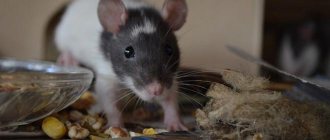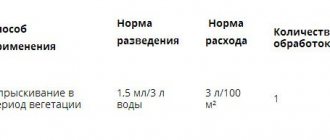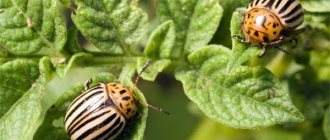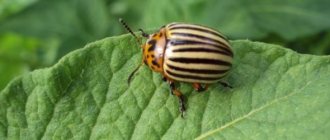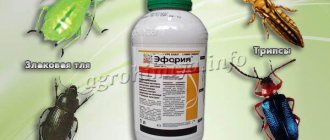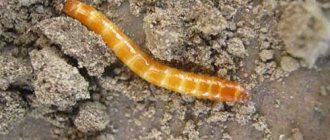Who eats the Colorado potato beetle in nature?
In the wild and beyond, there are gourmets who enjoy eating striped leaf beetles and their larvae.
Natural enemies of the Colorado potato beetle are insects and birds:
- ladybugs;
- bedbugs;
- lacewings;
- ants;
- guinea fowl;
- partridges;
- pheasants;
- chickens;
- turkeys.
Note! Among amphibians, some species of lizards and toads adore striped insects.
Wild birds can be ignored, as it is very difficult to attract them to a summer cottage. It is better to breed domestic birds. The benefits will be enormous.
South American farmers were the first to put forward the idea that domestic birds should be used to combat pests of potatoes and tomatoes. To make their dream come true, South Americans bred a special breed and set it against the nightshade leaf beetle. This breed is guinea fowl or Guinea chickens.
Birds feeding on the Colorado potato beetle
In its homeland in Central and South America, the Colorado potato beetle has enough natural enemies, where the population of this potato pest does not threaten the crop. Attempts to adapt predatory insects (picromerus and podisus bugs) to other climatic conditions were unsuccessful. Then farmers used poultry to combat the Colorado potato beetle. It turned out that after feeding, some birds eat eggs and larvae.
Guinea fowl, turkeys, pheasants and gray partridges cope well with this task. The last two birds, although they are biological enemies of the Colorado potato beetle, are rarely hatched in our area.
Guinea fowl (Guinea chickens) are beautiful, easy-to-care birds with dietary meat and eggs. The larvae attract birds by their color. Turkeys are also good at killing beetles, but they are more finicky to raise and get sick more often. Both birds adapt to Russian frosts.
Guinea fowl is the most effective bird against beetles
The turkey is a useful enemy of the Colorado potato beetle
Unlike ordinary domestic chickens, in search of food, turkeys and guinea fowls do not rake the soil with their paws, eating the Colorado potato beetle on the tops. They can be released into the garden without fear for the plants. But these birds have not lost the ability to fly. In order for the birds to remain on the potato plantation, their primary wings are clipped.
During planting and growth, potatoes should not be treated with chemicals against diseases or pests. Otherwise, the birds may get poisoned and die.
Origin
The main pest of nightshade crops: potatoes, tomatoes, eggplants, peppers is the Colorado potato beetle.
People first started talking about this insect outside of Mexico in the 19th century. In the US state of Colorado, this pest caused significant damage to potato plantations.
The wider the potato culture spread around the world, the greater the number of pests that appeared in the fields. This is due to the beetle’s extraordinary ability to adapt to changes in environmental conditions.
The length of the insect is 7-16 mm. The white wings are lined with longitudinal black stripes. The abdomen, legs and head are brown-orange in color.
Lays up to 160 eggs. They are bright orange, oblong, 0.8-1.5 mm long. The larvae are inactive, yellow or orange-red, with rows of black dots on the sides and a black head.
Nature has endowed the Colorado potato beetle with extraordinary immunity, which helps it adapt in one or two generations to get used to climate change and not react to toxic agents.
Adult insects overwinter in the soil in the fields where they fed in the summer. The depth of occurrence is 15-20 cm. They emerge from the ground when the soil around them warms up to 14-15°C. At this time, the crops on which the beetles fed are already covered with green leaves. Therefore, pests immediately lay eggs on the back of the leaf.
Damage to nightshade plantations is caused by adults and larvae, completely eating the greenery, leaving only veins on the plants.
After 3-17 days, depending on the temperature, larvae appear. They feed on potato leaves and grow rapidly. They feed for 15-22 days, then go into the soil and pupate.
After 7-8 days, adult insects emerge from the pupae. Depending on the climate, from 1 to 3 generations of offspring can develop.
It is difficult to destroy a pest in your own garden. Adult beetles travel tens of kilometers in search of food. And it’s not difficult for them to move from the neighboring garden to the vacated bed.
During the times of collective farms, potato fields and private gardens were treated jointly. Now it is impossible to organize such an event in one day. And the harm from pesticides is no less than from the Colorado potato beetle.
The massive distribution of insects and low susceptibility to chemical poisons prompted scientists to look for its enemies in nature.
Do guinea fowls eat insects?
Don't be skeptical about the fact that guinea fowl eat leaf beetles, it's true.
The feathered “special forces”, walking along the rows of potato plantings, will destroy not the adult striped pests themselves, but their larvae and egg laying.
It is enough to release feathered birds into the garden 3 times - and not a trace will remain of the garden pest.
There is, and the main disadvantage is that Guinea chickens are very shy birds. It is enough for someone to scare them, and they immediately begin to “bawl.” Frightened, they can fly to a safe place and return home only in the evening.
Read more: Spider mites on marigolds, aphids and other plant pests: photos of parasites that eat flower leaves, how to fight them and how to treat them in the garden
What insects eat beetles?
May be interesting Spider mites in a greenhouse, control and prevention How to deal with scale insects on indoor plants Wireworms: methods of combating it
Not only birds feed on these insects. There are a lot of their flying counterparts who are not averse to dining on larvae. To minimize the use of chemicals, you can attract flying enemies of the beetle to your plantings.
- Ladybugs. Wolves are the orderlies of the forest, and the real orderlies of the garden are the ladybug. It is capable of destroying the Colorado potato beetle and other garden pests. Ladybugs eat only eggs, so they help in the early stages of pest infestation.
- Lacewings. This small, foul-smelling insect can also help a person fight potato pests. Lacewings are not able to cope with adult individuals, but they can eat the larvae and eggs. This is a very voracious insect.
- Sifrids. Another useful flying insect that feeds on the eggs and larvae of many pests in the garden.
These small guests of the garden will help reduce the population of the striped pest in early spring.
Natural enemies
Today, natural enemies can help in the fight against Colorado potato beetles. Insects that eat this beetle include: ladybug, lacewing, and syphridids.
As for birds, these include:
- guinea fowl;
- pheasants;
- partridge;
- turkeys.
Ladybug
The ladybug is one of the most common insects. Gardeners can thank her for the destruction of the Colorado potato beetle, aphids and many other pests that very often operate in gardens and vegetable gardens. But despite this, ladybugs will only help in the early stages, because they only eat eggs and small larvae. As for adults, they do not attract ladybugs.
Lacewings
Lacewings are also an insect that kills potato pests. This insect looks like a small midge. And it destroys not only the Colorado potato beetle. But, like the ladybug, the lacewing eats larvae and eggs. But you need to fight adult beetles using other methods.
Sifrids
These insects are also called hoverflies. These small predatory flies are capable of fighting the larvae and eggs of the Colorado potato beetle. These flies are small in size, but in the early stages they will be very useful.
As you can see, all insects that are natural enemies of the Colorado potato beetle will be useful only at the very beginning, until the eggs and larvae become adults. If you miss this moment, then the presented insects will be useless.
Guinea fowl
This bird is domestic. She is not fussy about care. They tolerate different temperatures well. Neither -50 nor 40 is scary for them. In addition, guinea fowl lay eggs that are hypoallergenic. They can be eaten by children, as well as people on a diet. These birds do not rake the ground, but get the larvae from the plant.
Important: if the area is 10 - 15 days, then 3 - 4 guinea fowl will be enough for this area to combat the Colorado potato beetle.
Pheasants and partridges
Very often you can see partridges or pheasants on the plots of summer residents. They help get rid of beetle larvae, and more. Like guinea fowl, these birds are undemanding in care and are not afraid of minor disturbances in maintenance and care. Pheasants sometimes have free range on the property. But they need to be monitored, because, in addition to the fact that they can feast on pests, they can also trample plantings and damage the crop.
You may be interested in:
Turkeys
These birds also eat Colorado potato beetle larvae, but require special care. They may be susceptible to various diseases. Therefore, when growing them, more care and attention are required.
Walking poultry should be done in June, because it is at this time that the beetle larvae are actively developing.
Important: using poultry, you can get rid of beetles, prevent their reproduction, and also get healthy and tasty meat and eggs.
The natural enemies of the Colorado potato beetle and larvae are insects. At the State Scientific Institution VNIIKH of the Russian Agricultural Academy named after. A.G. Lorch has developed various modifications of conveyor lines for the mass continuous cultivation of entomophagous insects, including protection against beetles. On the territory of the European part of Russia, scientists have classified more than 50 species as such.
At the first stage, when adult pests appear on potatoes, the following insects are active:
- ants;
- side-walking spiders;
- ground beetles;
- lacewings.
A significant influence on the second wave of pest generation emerging from egg clutches is exerted by:
- picromerus and podisus bugs;
- ladybugs;
- predatory mites;
- hover flies.
But it is impossible to breed beneficial insects on a personal scale to clear the beds from a massive invasion of Colorado. Therefore, the main enemies of the harmful Colorado potato beetle, which are capable of clearing plantings, turned out to be birds.
Eating adult insects is not easy. It has strong integument, a bright orange belly and paws warn that their owner is poisonous and not suitable for food. By consuming potato leaves, the pest accumulates a large amount of toxic substances in its own body.
Read more: Cylinder beets growing description photo
But, nevertheless, it is the bird that is the enemy of the Colorado potato beetle. Its larvae are inactive, without protective cover. Pecking them is not difficult for those birds whose stomachs are adapted to digest such food.
Which bird can help?
The natural enemies of the Colorado potato beetle are many insects that are found in our country. Such insects include, for example, the lacewing. But using insects to combat this pest is not advisable, since they will still cause more harm, and it will not be possible to breed them.
But in addition to insects, several species of birds live in the CIS countries, which in this situation can act as assistants in the fight against the Colorado potato beetle. Which bird eats it? The list of such birds that live in our country includes:
All of the above birds are domestic and therefore can be used to destroy the Colorado potato beetle in gardens. In this situation, breeding guinea fowl is considered the most effective. Guinea fowl is a poultry that belongs to chickens, has tasty meat and is absolutely unpretentious in breeding. This “destroyer” of the Colorado common insect is grown in our country for the following reasons:
- dietary meat;
- Guinea fowl lay hypoallergenic eggs. Therefore, they are excellent for feeding small children;
- good tolerance to any weather conditions, which our country is so diverse in, including even the winter period;
- resistance of birds to many diseases. Unlike ordinary chickens, guinea fowl get sick much less often. The most common diseases are caused by spoiled and moldy food;
- can eat many harmful insects, including the Colorado potato beetle.
Article on the topic: Anti-bug against the Colorado potato beetle: instructions
Another advantage of these birds, along with turkeys, is that they do not rake the soil in search of food. This bird eats beetles and their larvae from the tops. Thanks to this, you don’t have to worry about planting cultivated plants.
For these reasons, the use of guinea fowl to combat insect pests is considered the most optimal. Keeping them in an open range will allow you to significantly reduce the population of harmful insects in your garden. Guinea fowl recognize pests by their specific striped coloring, which stands out against the background of green tops. For them, larvae are a real delicacy that fully satisfies their nutritional needs. After all, in fact, all insects contain proteins and pure protein.
Walking guinea fowl or other poultry to destroy the pest population should be done at the beginning of the larval development period (the first half of summer). Partridge and pheasant also eat the larvae of this pest. They, like guinea fowl, will also cope with the task perfectly. When used, it is possible to effectively combat a number of harmful insects. At the same time, gray partridges are more preferable, since they can be grown in any weather conditions. By the way, this is why they are widespread in the wild.
Turkeys, after guinea fowl, partridges and pheasants, occupy fourth place in the “rating” of beetle destroyers. But the disadvantages of breeding them include the fact that they are prone to various diseases and have a difficult temperament. Turkeys are prone to depression, which manifests itself in refusal to feed.
All of the above poultry can withstand temperature fluctuations well over a fairly wide range - from +30 to -30 degrees.
The use of birds allows you to effectively reduce the population of beetles and their reproduction in the future, and in addition to this, you can also obtain food products such as meat and eggs.
In addition to the above mentioned domestic species, wild birds can also reduce the population of these pests to a certain extent. These include:
As you can see, there are quite simple methods of controlling and containing the population of the Colorado potato beetle.
Who eats the pest
There is no need to rely on birds that live in the wild with a tropical climate. Therefore, scientists turned their attention to domestic animals.
The pest's enemies turned out to be domestic birds:
- chickens;
- partridges;
- guinea fowl;
- turkeys;
- pheasants.
Important! In order for the bird to get used to using the Colorado potato beetle as food, it is mixed in crushed form into the food of the chicks.
Chicken
It does not feed on adult pests or larvae on its own. This is due to the fact that the natural habitat of domestic hens is Asia, not America. This insect does not belong to the usual food. Therefore, chickens have to be trained.
Young birds at 3-4 months are taught to eat these insects by mixing larvae into the food. After some time, the birds get used to seeing the pest as food. Once trained chickens are released into the garden beds, they find food for themselves, clearing the plantings of pests and other insects along the way.
Partridges
Poultry lovers keep gray partridges on their farm. These unpretentious creatures thrive in cages on good food. They can also feast on pest larvae. But releasing wild birds into the garden to fight insects is hardly advisable. They will peck the Colorados, but it is unlikely that they will be able to drive them back into the enclosures.
Turkeys and guinea fowl
The Colorado potato beetle is afraid of poultry, which is found in peasant farmsteads in Mexico. Turkeys and guinea fowl are ardent opponents of the pest. Released into vegetable gardens that have not been treated with chemicals, the birds happily peck at the soft larvae. Adults are not abandoned either.
However, they also need to be “trained” to destroy the pest. From three weeks of age, chickens are given grated potatoes and green tops in their complementary food. They gradually become accustomed to the smell of the vegetable and develop the habit of looking for food with a similar aroma. After 2 weeks, crushed Colorado potato beetles are thrown into the mash.
Guinea fowl or Guinea chickens are rare guests in the poultry yard in Russia. Despite their unpretentiousness, tasty meat and eggs, they still remain exotic in private backyards. This bird itself pecks soft-bodied larvae and adults without raking the soil in potato plantings. The guinea fowl can even eat clutches of eggs from the tops without harming the green leaves.
Turkeys require more careful attention. The Indian rooster has a complex temperament, he needs a special approach and good food, he often gets sick and may refuse to feed. But the bird’s stomach is adapted to eating the Colorado potato beetle and larvae. Turkey poults are taught from childhood to collect them as food.
Is it possible to use chickens against the Colorado potato beetle?
In order to destroy the Colorado potato beetle, ordinary, well-known chickens began to destroy them, they must first be trained to do this. If this is not done, the larvae will remain on the potatoes.
In order for chickens to get used to fighting Colorado potato beetles, they need to start training them at 3-4 months of age.
The training is quite simple:
- First you need to crush the beetle larvae and add them to the chickens' feed.
- At the second stage. You need to add potato tubers or tops to the feed. This way, the chickens will get used to the potato smell.
- After a week, the amount of supplements can be increased.
- When the chickens get used to the potatoes and larvae, they can be safely released onto the site.
Important: if a decision has been made to use poultry in pest control, then it is imperative to avoid using chemicals.
As you can see, chickens can not only be used against the Colorado potato beetle, but, most importantly, they must be accustomed to it.
Read more: High-flying pigeons description of photo types
Who eats the Colorado potato beetle from birds? Chickens are the enemy of the striped insect. For domestic chickens, pests of nightshade crops with their eggs and larvae will be a tasty treat, because they contain protein and protein that are beneficial to the body.
Poultry helps preserve crops, protect crops from pest invasion, and prevent their further reproduction.
Is it possible to train chickens to peck harmful pests from plants? It is not hens who need to be taught to eat treats, but chicks. When the chickens are 3 weeks old, chopped (grated) potatoes and the tops themselves should be mixed into the feed. Over time they will get used to the smell.
By the 1st month of life of chickens, harmful insects themselves should be present in the diet. They need to be mixed into food in crushed form. Over time, the number of pests of tomatoes and potatoes increases. At 3 months, young individuals can be safely released into potato beds. One thing, but! Before sending them to the garden, do not feed them! This way they will destroy more larvae.
Attention! If a natural method is used to combat harmful insects, that is, with the help of birds, under no circumstances should the plantings be treated with chemicals.
How to train your chickens to eat the Colorado potato beetle
Chickens will not eat the striped guest on their own; they are not accustomed to it. This is due to the fact that their homeland is Asia, not America. If it is not possible to raise poultry that feed on the potato leaf beetle, ordinary chickens are trained to eat such food. True, training should be done gradually, when young chickens are just beginning to form their taste preferences.
Chickens begin to get used to eating insects at 3-4 months. This is done in several stages.
- First, hand-collected larvae are added to the bird's feed.
- In the next step, the birds are accustomed to the smell of potatoes. To do this, crushed leaves and tops are added to food.
- For the first 7-10 days, the supplement should be in a minimal dose. Gradually its volume is increased.
- After the “training” is completed, the chickens can be released into the potato beds. They themselves will peck the pest from the leaves.
On a note!
If the hen has been trained from an early age to eat insects on tops, then she can train her brood on her own by taking the chicks to areas with potatoes.
Pheasants
Recently, it has become fashionable to breed pheasants on private farms, which also easily feast on Colorado. But this bird is not completely domesticated, semi-wild. And also dear. Therefore, hardly anyone would want to release the pest from a closed enclosure into a potato field to destroy the pest.
Even if it copes perfectly with ground pests, with the larvae of the cockchafer and mole cricket. It is more prudent to use the collected beetle as complementary food for feeding adult birds.
If the potato field is fenced, and the pheasants are accustomed to returning to their enclosure as chicks, then you can try to get rid of the Colorado potato beetle in this exotic way.
Of the birds found in the wild nature of Russia and capable of eating the Colorado potato beetle, the following representatives of birds are noted:
- cuckoos;
- hoopoes;
- crow;
- bluethroats;
- starlings.
Of these, only the latter can be attracted to the sites by hanging a birdhouse. But these birds settle in groups, so at least a dozen nesting sites are made for them at a time.
Professional agronomists are convinced that information about the consumption of the Colorado potato beetle by birds living in the middle zone has not been verified and is unlikely to be true. Birds are big fans of ripe berries and mistakenly confuse red larvae with them.
Important! While saving plantings from the Colorado potato beetle, you may miss the harvest of strawberries and cherries, which these birds are very fond of.


